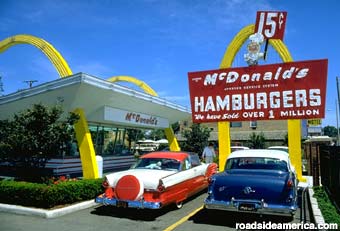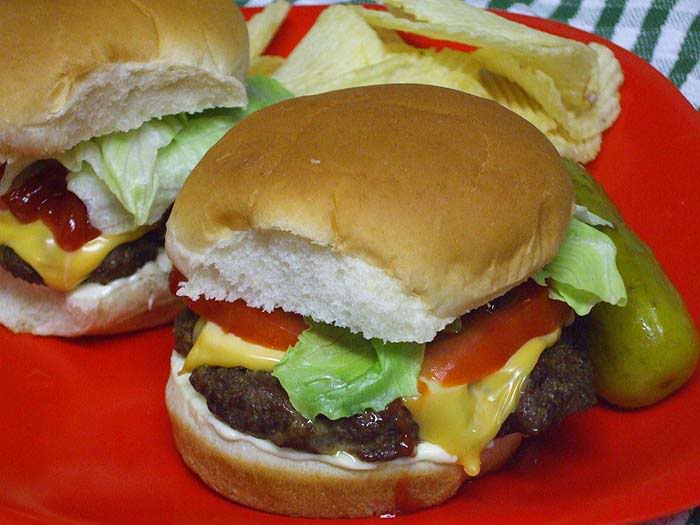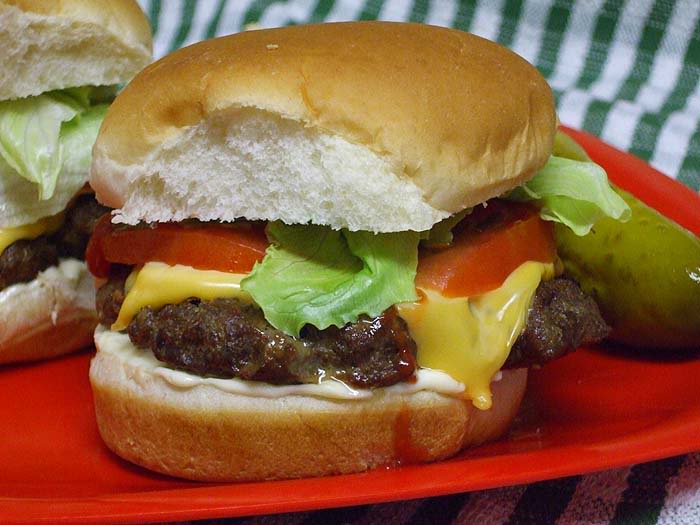Here's what the people who study the phenomenon say. Restaurants have very few business factors they can control. They cannot control rents, utilities, or the unit cost of food. Not can they really control salaries which become fairly standardized. Nor can they control the number of customers who come to eat.
What they can control is how much food they serve and charge for. In any sales business, the more you sell, the more money you make. You can't just charge more for the same food. You have to provide more food in a meal, if you want to charge more for the meal and make more profit. You cannot do it with two-for-one deals. People will not buy two hamburgers, just to get the second one at a lower price. But they will pay more for a bigger burger, if it's available and seems like a good deal. To do this, a restaurant must increase the plate size, too. That plate size becomes the standard. You want customer to want a full plate. Once all this begins, all the competing restaurants must follow, else they appear to be offering inferior value. And the restaurant plate becomes the home standard, also. If you happen to buy a 1940's home that has not been updated, you may well find that the kitchen cabinets will not accommodate a modern dinner plate.
Buffets, when they could be found, were once limited to plain "American" food. Now, the majority are Chinese. And such things as "endless pasta bowls" are featured at Italian chains. Chinese, Italian, and Mexican food are among the cheapest to produce and among the most profitable in very large portions.
Some notable examples. In 1972, the McDonald's "Quarter-Pounder" was considered a large hamburger. It was large. It's original 1955 burger was a "one point two ouncer."
A "large" pizza was once 10 or 12 inches. Pizza is still cut into the same eight slices. But a little geometry will reveal the way in which area increases as diameter increases, and the 1/8 pizza slice gets about 2/3 bigger. In my youth, Coke came in 8 ounce bottles or was served at a fountain in a glass that might barely hold 8 ounces. The standard dinner plate was ten inches. It is not 12 inches. A 10-inch plate has an area of 78.5 square inches. A 12-inch plate is 113 sq. in. And remember how you have to allow for the original coffee "cup" when you buy a coffee maker. People do fill the plate and the cup, and they tend to eat and drink it all.
Now, let's all go out for a Cheesecake Factory Ranch House Burger
Opps. Looks like that 1,900 calorie wonder was listed too many times on the worst hamburger lists. We'll just have to go on over to Chili's for the Chili's Southern Smokehouse Bacon Burger, only 2,290 calories with fries.

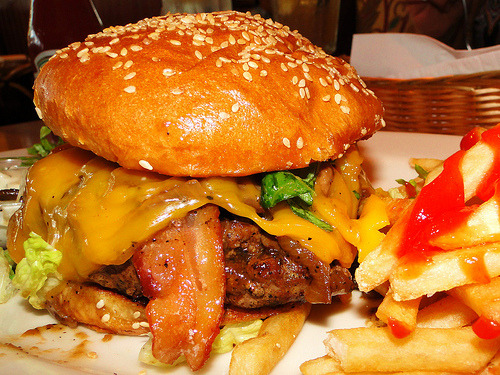
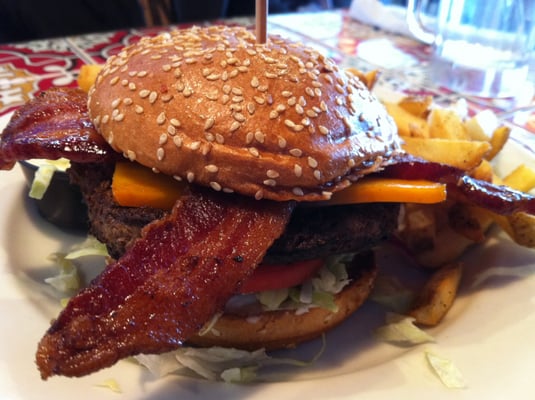


 ), I always get iced tea. They have the best iced tea. Sometimes, I'll just go there for the iced tea.
), I always get iced tea. They have the best iced tea. Sometimes, I'll just go there for the iced tea.